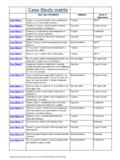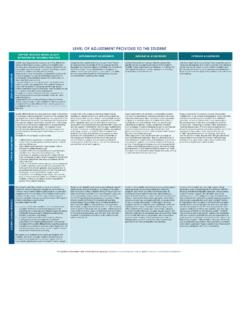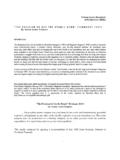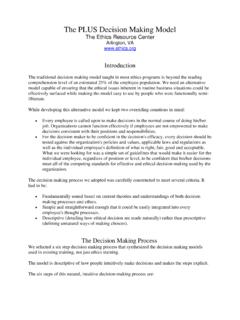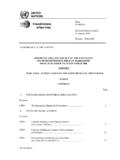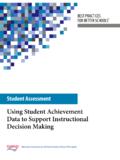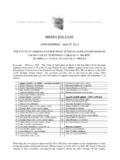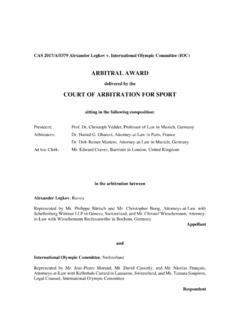Transcription of Implementing the Nationally Consistent Collection …
1 Implementing the Nationally Consistent Collection of Data on School Students with Disability (NCCD). strategies to support decision making INTRODUCTION 2. PREPARATION AND EFFECTIVE SCHOOL PROCESSES 3. MECHANISMS TO support TEACHER decision making 4. strategies TO support decision making : STEP 1 5. WHICH STUDENTS ARE INCLUDED IN THE NCCD? 5. Evidences of personalised learning and support 5. The definition of disability in the NCCD 5. Which students should be included? 6. Are adjustments provided to address disability? 7. strategies TO support decision making : STEP 2 LEVEL OF ADJUSTMENT. 8. Determining the level of adjustment 8. Students with disability for whom support is provided within quality differentiated teaching practice 8. Differentiating between supplementary, substantial and extensive adjustments 9. strategies TO support decision making : STEP 3 DETERMINING THE. BROAD CATEGORY OF DISABILITY 10.
2 1. Introduction The Nationally Consistent Collection of Data on School Students with Disability (NCCD) represents a new approach to understanding students with disability across all Australian schools. The model for the NCCD relies on the professional judgements of teachers about their students. It requires teachers and schools to make evidence-based decisions about: students with disability who are receiving reasonable adjustments to access education because of disability, Consistent with definitions and obligations under the Disability Discrimination Act 1992 (DDA) and Disability Standards for Education 2005. the level of adjustment being provided for each student with disability, in both classroom and whole of school contexts the broad category of disability the student best falls within. Individual teacher judgement in making these decisions will reflect the school context. Robust school systems and practices will provide principals and teachers with a vehicle to develop and support common understandings in their school about the NCCD and the important role of teachers within it.
3 Robust school processes also support and promote shared and Consistent decision making around each of the steps in the national data Collection . This document provides guidance about strategies that will support principals and teachers in planning and implementation of the NCCD and in effective and Consistent decision making . It does not replace other information available to schools to support the NCCD and should be used in conjunction with information provided on the ESA training website and the Australian Government Department of Education and Training website. 2. Preparation and effective school processes Many principals and teachers across Australia took part in the phased national implementation of the NCCD. Data and feedback from these principals and teachers highlighted a range of planned and practical actions that have been demonstrated to support effective and Consistent decision making in Implementing the NCCD process in their schools.
4 These actions include the following: Strong, strategic and effective school leadership and involvement from the principal and the executive team. A whole school or school team approach connecting all teachers and support staff to the NCCD and its processes. This key strategy was used by many schools to accommodate variables in the decision making process such as teacher experience, knowledge and understanding of the provision of support for students with disability. Analysis of all available information to inform evidence-based decisions about the inclusion of students in the NCCD, including the level of adjustment and category of disability for each student. Maintaining an evidence base is a requirement of the NCCD. Targeted professional learning promoting knowledge and understanding of the Disability Discrimination Act 1992 (DDA) and the Disability Standards for Education 2005 (the Standards).
5 It is strongly recommended that teachers, support staff and principals complete professional learning in this area as a vital adjunct to the data Collection . A. whole school approach to professional learning about the DDA and Standards as well as regular refreshers will help to ensure that all staff in the school remain knowledgeable about their shared responsibilities and accountabilities to students with disability. The planned development of shared understandings among school staff about the NCCD model, levels of adjustment and categories of disability supported through the use of resources on the ESA website. Planned, rigorous and ongoing professional conversations about highly effective teaching and learning. This includes the provision of quality differentiated teaching that meets the needs of all students including those with disability, as well as the provision of personalised adjustments where needed for students with disability to meet their identified educational needs in consultation with the student and/or their parents and carers.
6 Aligning professional dialogue and decision making with the model for the national data Collection will support school teams to achieve consistency in decisions about students included in the national data Collection . 3. Mechanisms to support teacher decision making The professional judgements that teachers make about their students' learning needs and the evidences that they draw on to support these judgements will reflect a wide range of school contexts and practices. Individual teacher judgement about which students are receiving an adjustment, which of these students has a disability under the DDA, their level of adjustment and disability category may vary within a school and across key learning areas. Teacher judgement is influenced by a range of variables including teacher experience, knowledge and understanding of the provision of support for students with disability. A team based approach can assist in building teacher capability and supporting teachers in their decisions.
7 Establishing a school culture where the development of effective teaching and learning practices and student engagement is a shared responsibility promotes school led consultative decision making practices and the development of common understandings. Collaborative, team based approaches that continuously refer back to the definitions and descriptors provided in the NCCD model will also assist school staff to moderate variances that may arise among teachers when determining each student's level of adjustment and disability category. This will contribute to greater consistency within the school and data quality for the NCCD. Ongoing professional dialogue between colleagues is a powerful tool in developing and maintaining consistency of teacher judgement now and over time. The allocation of time for these discussions will support continuous improvement in teacher capacity in this area. The characteristics that make each school unique will shape and inform the systems and processes that work best to identify and support the educational needs of their students with disability and the professional learning and support needs of their teachers.
8 Principals have an important leadership role in establishing and maintaining effective learning and support processes that respond to their specific school context. 4. strategies to support decision making : Step 1. Which students are included in the NCCD? The NCCD highlights the importance of teachers and support staff knowing and understanding the learning and support needs of individual students and groups of students, including where adjustments may be required. Schools that build into their practice ongoing analysis of a range of data about student engagement, learning growth and outcomes can plan more effectively for students' learning. The students included in each year's data Collection will provide an increasingly useful starting point for professional discussions and school planning. This data will assist schools to monitor and support planning for individual students. Evidences of personalised learning and support decision making for the NCCD relies on evidences of personalised adjustments and reflects the wide range of practices in schools for meeting the educational needs of students with disability.
9 Schools will draw on evidence from across four key areas when making their decisions: the assessed identified needs of the student reasonable adjustments provided to the student to address their identified needs monitoring and review of the impact of the adjustments provided consultation and collaboration. Effective management of the process of personalised learning and support for students with disability forms part of each school's accountability. The development of protocols within the school about how evidence of personalised learning and support is recorded and stored is an important practice that supports the smooth implementation of the NCCD. More importantly, it is an essential resource in personalising the learning for students with disability. The definition of disability in the NCCD. The model for the Nationally Consistent Collection of data is based on the existing obligations of all Australian schools under the Disability Discrimination Act 1992.
10 (DDA) and Disability Standards for Education 2005 (the Standards) and draws on the definition of disability in the DDA. 5. The DDA uses a broad definition of disability in order to provide protection against discrimination for a wide range of people. In addition to an individual with disability, the DDA covers other people, including associates of a person with a disability, people who do not have a disability but who may face disability discrimination in the future, people who are not in fact impaired in functioning but treated as impaired, and people with conditions that may result in impairment such as obesity, mild allergies or physical sensitivities, and those who wear glasses ( ). The Disability Standards for Education clarify the obligations of schools under the DDA to provide reasonable adjustments for students with disability where required so that they can access and participate in education on an equitable basis to their peers.


